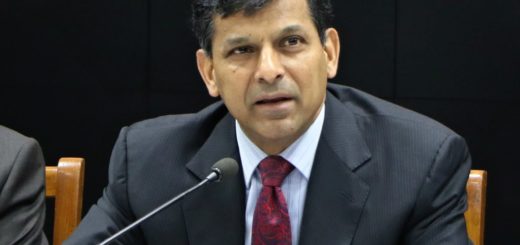CCRI STRATEGY TEAM TELECONFERENCE: 12/15/14

Present: John Buggy, Peter Wilkinson, Brendan Butler, Virginia Saldanha, Janet Hauter, Bob Kaiser, Rene Reid
Opening prayer
Approval of “Who We Are” for posting on our website
Discussion occurred for last moment revisions. Final agreed-upon version of Who We Are can be viewed on our website: http://www.catholicchurchreform.com/whoWeAre.html.
Coordinating with COR and other reform groups to create a single survey used by all
Janet reported on the COR conference call. Their subcommitteepresented their proposal and there was some discussion about a proposal made by Ron DuBois of VOTF who suggested that Bill D’Antonio of Boston College fame engage in the process after two NY people (a statistician and the head of the NY Affiliate of VOTF proposed doing a first draft of a survey) would take on the challenge and then connect with Professor D’Antonio, a sociologist, to see if he could analyze the data.
The subcommittee proposed listening sessions (with perceived buy in from Bill Bonnot of the AUSCP who appeared confident that bringing it up at this week’s meeting would get a “Yea” vote)Another recommendation was that the COR organizations develop recommendations for individuals to be nominated to be invited to the Synod that represented one of the “pain points” for the people.
A press release would be develop in preparation for the 2015 Synod requesting authentic dialogue about the life experiences and faith life of all Catholics on some of the Church’s teachings. The Church needs to learn about the actual vitality and beauty of the faith life as experienced in families.
Develop a website that is not representative of any one organization but is neutral in nature and represents an action that is fully collaborative and which could be the central repository for all actions targeted to the Synod.
After hearing the presentation, there was some discussion among COR members. The comment was made that they cannot go with the Lineamenta as the foundation for a survey due to the fact that the Vatican survey is extremely complex and difficult for the average Catholic to answer. All conversation came to a halt and the speaker was asked to expand on her position. She said: “The survey is geared toward same old questions/ responses. It is obvious by the wording that the bishops are stuck in the same old paradigm. The questions are unclear and jumbled.” The subcommittee was asked to go back to the drawing board and use email to communicate new alternatives.
Our Strategy team was surprised at the outcome of the COR discussion and suggested that the Relatiowas the key. We need to return to it and take what we can get from the Lineamenta to add clarity. This set of questions will go nowhere if released as is. The questions themselves are multi-dimensional, difficult to understand, and all 46 require essay-type responses. The Strategy Team proposal was that we must focus on the core meaning of these questions to fully understand their intent and come up with a simplified survey to get out to the Faithful.
The team felt that theLineamenta questions will be an embarrassment of local conferences. It is impossible to get responses from a large number of people with this many open-ended questions. Maybe this is an opportunity to wake up the bishops and the Synod office who released this questionnaire. To see the Vatican questionnaire: http://www.vatican.va/roman_curia/synod/documents/rc_synod_doc_20141209_lineamenta-xiv-assembly_en.html.
We need to come up with an alternative. We need to bring reality to the Synod and not just go along with the Vatican. Stories of the people may help. We need to talk a lot about this. Let’s begin an email dialogue.
Agreement to take next week off as it is Christmas week. There will be an attempt to meet on the 29th and Rene will check everyone’s availability.
AMEN! Makes me want to say, “Hell, I wish I had said that!” Adding my two-cents worth, I suggest:
It seems to me that CCRI is at a very important juncture. A juncture at which a very important directional decision needs to be made. It has to be decided whether CCRI wants to be perceived as an "insider" movement or an "outsider" movement. By that I mean whether it wants to be perceived as a group that wants to be collaborative and helpful to the bishops as they seek to carry out the tasks entrusted to them in preparation for the Synod of Bishops of 2015 or to be perceived as an alternate lay organization that wants to present its own broader, more inclusive response to the Vatican's request for input from the wider Church. Do we want to help formulate a quantifiable response to the questions asked or develop a survey that addresses the questions we would prefer that they had asked.
I think that CCRI can have a greater more lasting effect on the decisions made at the October 2015 Synod if we are perceived by the Bishops as an "insider' leaven than as an "outsider" alternate vision and voice. We can create division or build communion. What does the Spirit ask of us?
Fr. Keith Brennan,SDS
I wholeheartedly agree with Fr Keith Brennan. I believe our only useful reason for being is as leaven inside Catholicism to build communion in a more enlightened way than exists now. At present we have a distorted view of Christian faith inherited from Scholasticism. We have a golden opportunity to insert our views. Let’s maximise it and promote a view of faith that is evolutionary and in tune with current thinking. We must dislodge the ecclesiastical hierarchy’s grip on their misperceived idea that outside the ordained hierarchy is a world of sinful contamination in need of their correction. We must make them reflect on a more appropriate result where the sensus fidei is respected as a collaborative participant in Catholicism and in the universal mission of the Church.
Here’s hoping for a birth of new life in this Advent season.
Scilla
















